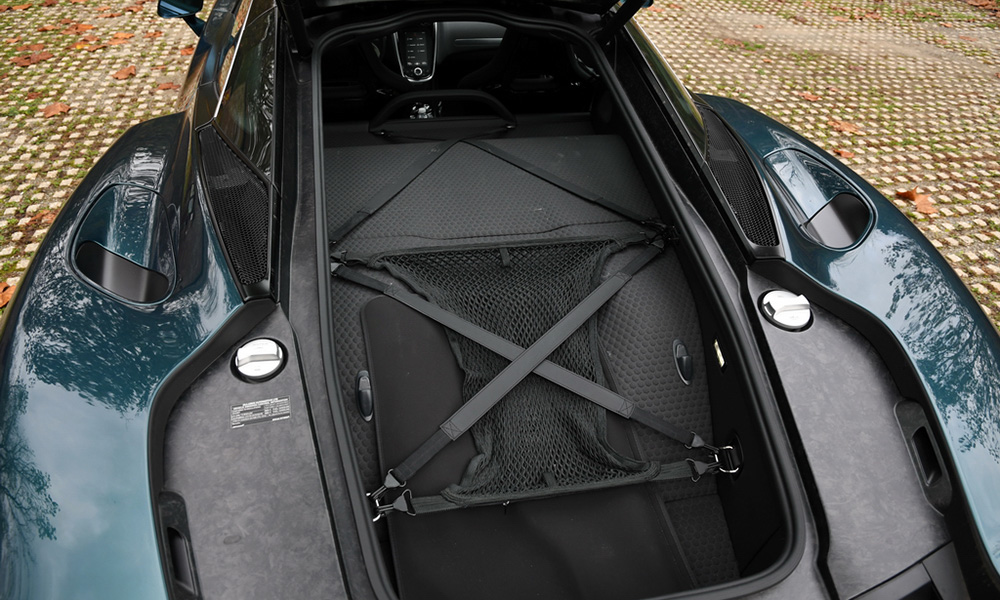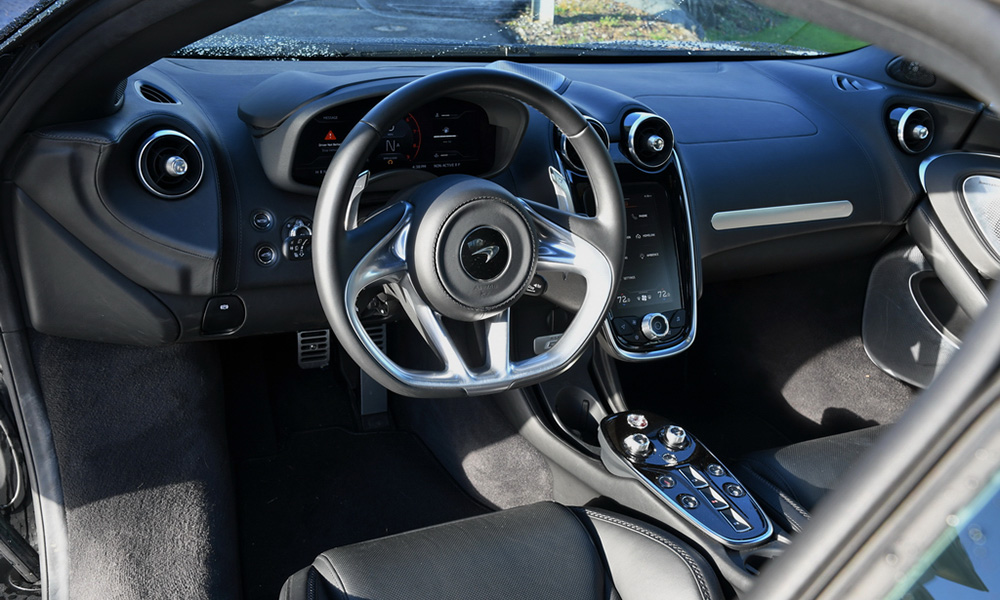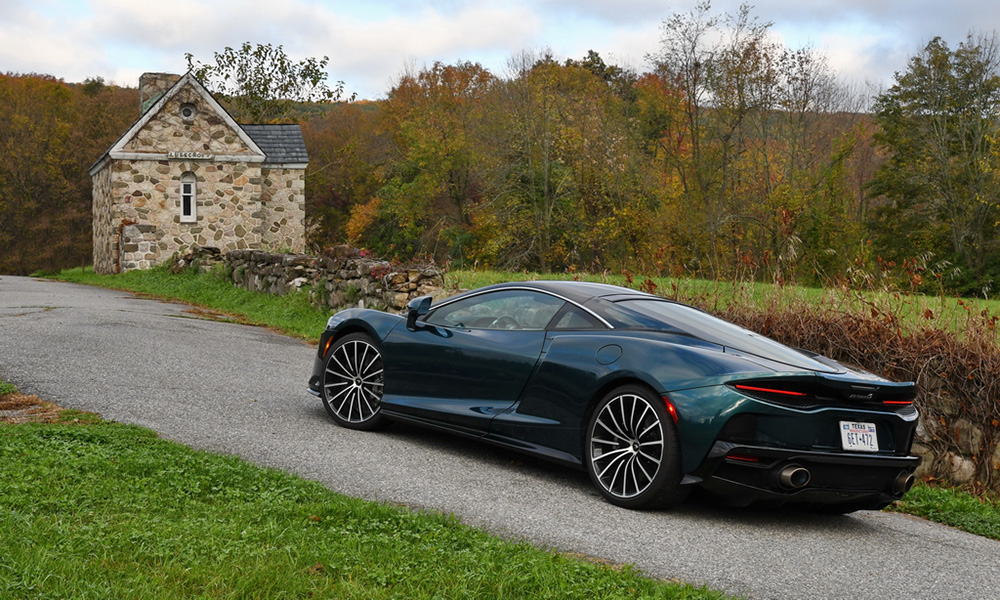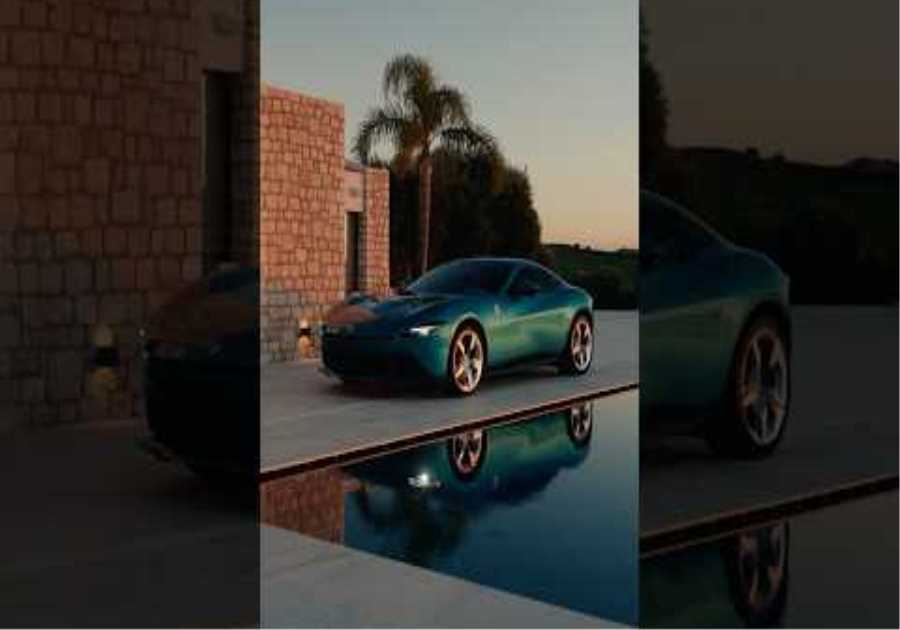
Photo: David Hauter
McLaren has built a reputation for itself in a relatively short amount of time. Aside from the McLaren F1, which was produced in very limited numbers in the 1990s, the company has only consistently built and sold street cars since the MP4-12C was introduced in 2011.
Of course, McLaren already had a pedigree of decades of motorsport experience on its side, but impressive nonetheless.
Most McLaren models are hardcore sports cars that put performance over comfort, but the company tried to go a little more in the other direction with the GT model.
Based on the 720S, the GT positions itself as a more luxurious, comfortable model that can be driven in more situations than models like the 720S, the 765LT or the Artura.
At around $ 210,000, the GT is also the cheapest McLaren when it comes to price.
With some design features borrowed from the ultra-rare Speedtail, the mid-engined GT is a bit sleeker and more understated than the supercar models, but it’s still aggressive too, with big side air intakes, big brakes, and fat exhaust pipes.

Photo: David Hauter
The twin-turbo 4.0-liter V8 is the same power unit from the 720S model, but is down to 612 hp (from 710 hp in the 720S) and 465 lb.-ft. Torque, with smaller but more responsive turbochargers with low inertia.
The GT’s data sheet certainly reads like a supercar. The GT is built around a lightweight carbon fiber chassis, has a dry sump oil system, a 7-speed dual clutch transmission and double wishbone suspension with adaptive damping with proactive damping control.
It weighs in at just 3,373 pounds, 234 pounds more than the 720S but 262 pounds lighter than the Porsche 911 Turbo. The GT can spin at 8,500 RPM and go from 0 to 100 mph in 3.1 seconds on its way to a top speed of 203 mph.
The most obvious difference between the GT and the tougher McLaren models is inside. There are leather upholstery and trim everywhere, and the engine is tucked under a leather-lined rear luggage compartment (fabric trimmings also available) that offers more cargo space.
The armrest and center console are better padded and the carpet is more luxurious. McLaren says there are 20 cubic feet of cargo capacity (15 cubic feet in the rear and 5 cubic feet in the front trunk).

Photo: David Hauter
With nothing but glass above it, it’s probably best not to put anything in the rear trunk that doesn’t want to get hot, especially if the V8 is directly below.
Another cool option in the GT that was on our test car is the panoramic glass roof, which is available with an electrochromatic function that offers five different levels of transparency through the glass that can be changed by pressing buttons on the headliner. It’s an elegant way to fine-tune the amount of natural light that enters the cabin.
McLaren also made changes to the hardware to give the GT its own personality. Aside from the detuned engine, the transmission is tuned for more relaxed gear changes, the springs are longer and softer to smooth the ride, and the dampers are tuned to be more pliable. The exhaust is also designed to be easy on the ears.
When you get in the GT you still get that racing car feel as the carbon fiber tub design still makes getting in and out of the car even more difficult than it is on a typical car.

Photo: David Hauter
Getting in requires swinging your legs over the wide rocker panel and bulkhead, but once you’re seated in the car it offers a good seating position and ergonomics. I am 1.80 m tall and I felt comfortable with enough leg and headroom.
The controls in the cabin are minimal, with most of the settings controlled via a touchscreen infotainment display. The system isn’t the simplest I’ve used, but it’s fine once you get used to it, and the buttons and dials for the gearbox and drive modes are easy to understand.
I also like that the steering wheel isn’t littered with buttons, it’s just used to steer the car.
It may be a little softer, but the GT still feels more like a supercar than other GT cars like the BMW M8 and the Mercedes AMG GT.
The engine in the GT doesn’t feel as tight and urgent as in other McLarens, but after a small turbo lag there is still a lot of thrust in it and it still sounds like a pure sports car, even in comfort driving mode that is a bit of a tamer. With the short bonnet and the engine in the back, as well as the low ride height, you feel very connected to the road.

Photo: Bill Dermody
Handling is the GT’s greatest strength when it comes to performance. McLaren made it more forgiving and comfortable for daily driving, but it still feels like a supercar when you get it on a winding road and drive it harder.
It feels confident and precise on demanding roads, with no understeer, minimal body roll and great feedback from the steering wheel and seat. It feels special.
Driving the McLaren GT is a slightly different experience than driving the more focused models, but it’s not much different. Some potential buyers may wish it was a little more comfortable and quieter, but I think McLaren did a perfect job of making it more accessible while maintaining its performance.
It’s the GT car for anyone who really wants a supercar but needs something more usable in everyday driving situations, and it retains enough of the sporty aspects McLaren is famous for to keep your back tingling while driving to move it.

Photo: David Hauter
![]()
David Haueter (@InfoTrends_DH) has been a car writer and photographer for 20 years. His text and photos have been published in Roundel, Bimmer, Forza and Excellence and SportsCarInsider.com, as well as in other automotive and racing magazines.







